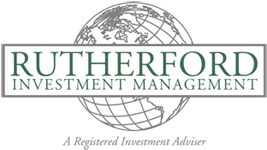Published October 11, 2011

The first quarter of 2009 is not a good reference point for a quarter, the current one, that started on a good note and saw some improvement in gross domestic product, consumer confidence and manufacturing output.
In August, household incomes fell. This was the first monthly decline in overall personal income since October 2009. Real disposable income is actually down for the year 2011. Personal spending was flat in inflation adjusted terms.
Each time the market tried to rally, it was crushed. September was the fifth straight month of market declines, the longest string since March 2009. However, that month also marked the beginning of a two-year market rally.
Worries persisted about the European debt crisis, which has drug on for over a year. Talk of a double dip recession gained currency, though such a predication was rejected by Warren Buffett. The global economy appears to be slowing, with the notable addition of China to the watch list.
The periodic good news followed by headlines of bad news led to one of the most volatile periods for stocks ever. In the quarter, the Dow moved by more than 200 points a day 18 times, and more than 400 points on four consecutive days. Investors’ nerves and confidence were rattled.
Financial stocks were among the hardest hit, with many banks falling by 25 percent or more. Morgan Stanley lost 40 percent in the quarter, including 10 percent on the last day alone.
Investors took solace in the fact that the third quarter is historically the worst of the year, and that the fourth quarter is typically the best. However, the third year of a presidential term is usually the best in the cycle, and that pattern will apparently be broken this time.
Except for oil, commodity prices also took a beating. Copper, sometimes called Dr. Copper, for its uncanny ability to forecast the economy better than economists, dropped sharply as fear of a slowdown in China developed strength. Gold tumbled as well.
A rally in Treasurys pushed yields to new lows. The yield dropped to 1.23 percent, well below the psychologically important 2 percent yield mark. Ten-year U.S. Treasurys returned 23 percent in the quarter; ironically, the rally occurred after S&P downgraded U.S. debt because legislators in Washington took the U.S. to the brink of default in early August. The dollar rallied, finishing the quarter 7.7 percent up against the Euro. The Swiss franc also dropped.
Wall Street strategists reduced their forecasts for growth and earnings as investors’ prospects for the year dampened. The Professional Risk Managers’ International Association predicted that home prices were unlikely to recover before 2020, a half generation.
The association further predicted that mortgage defaults would remain elevated for another five years, and would increase over the next six months. It also predicated an uptick in defaults on auto loans, credit cards and student loans. Finally, small business will continue to have problems gaining access to loans, it said.
It is clear that we are in the midst of a very slow recovery from the last recession that ended in June 2009. However, in spite of the official end of the recession, almost no one will tell you that it feels much different than a recession.
Except for unemployment which remains high, most indicators of growth are bumping along the bottom. We will be in this mode for an extended time. Markets will remain volatile at least until the European debt crisis is resolved. The markets are being driven by headlines, not fundamentals, so sudden shifts are inevitable.
The best approach is to not let an investing program be driven by headline news, but rather adherence to careful market analysis. Dividend-paying stocks in stable growing businesses are a safe haven in times such as these, and investors get paid more than cash in the bank. As always, a well diversified portfolio is a good way to spread risk.
Originally posted in the Daily Journal of Commerce, Portland OR
